Have you ever seen cootlings? I saw them live only a few days ago and I am impressed with the appearance of these little ones. Adult coots are black with a white stripe on the forehead and a white beak, and their little birds, apart from a black, fluffy body, have red coloration on the front of the head and yellow, fluffy feathers on the back of the head, which look a bit like short hair. They look wonderful.
Czy widzieliście kiedyś pisklęta łyski? Ja zobaczyłam je na żywo dopiero kilka dni temu i jestem pod wrażeniem wyglądu tych maluchów. Dorosłe łyski są czarne z białym paskiem na czole i z białym dziobem, a ich maleństwa oprócz czarnego, puchatego ciałka mają czerwone ubarwienie na przodzie głowy i żółte puchate piórka z tyłu głowy, które wyglądają trochę jak krótkie włosy. Cudny widok.

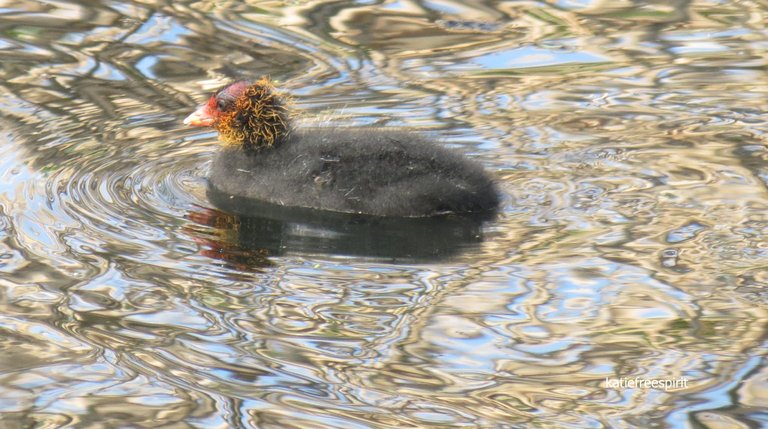
Coot, which I could observe for a while, swam in the river where I often ride my bike. It has a lot of reeds and grasses which make a great place for various water birds to hide there. The reeds bounced in the water creating interesting, almost psychedelic effects.
Łyski, które mogłam przez chwilę poobserowawać pływały w rzece przy której często jeżdżę na rowerze. Znajduje się tam dużo trzcin i traw, które stanowią wspaniałe miejsce dla różnych wodnych ptaków, by się tam ukryć. Trzciny odbjały się w wodzie tworząc ciekawe, niemal psychodeliczne efekty.
Next to the reeds, there was a small wooden bridge on which two cootlings walked. The rest swam with their parents. I saw a situation where two small cootlings were swimming with their parents and were moving farther and farther away from the wooden bridge. I wondered if the two little cootlings from the wooden bridge would start flowing towards them, but they didn't. I also saw a funny scene when a large coot scolded its chick (I don't know for what) and chased them for a long time along the river, making loud noises. It is sometimes dung to watch how small birds are raised by wild animals ;)
Obok trzcin znajdował się mały drewniany mostek, po którym chodziły dwa pisklęta łysek. Reszta pływała z rodzicami. Widziałam taką sytuację, że dwie małe łyski pływały z rodzicami i odpływały coraz dalej od drewnianego mostku. Zastanawiałam się, czy te dwie małe łyski z mostku zaczną płynąć w ich stronę, ale tego nie zrobiły. Widziałam też zabawną scenę jak duża łyska skarciła swoje pisklę (nie wiem za co) i goniła je przez dłuższy czas po rzece, wydając przy tym głośne dźwięki. Łajnie jest czasem poobserować jak wychowywane są dzieci przez dzikie zwierzęta ;)
And what do you think is on the menu card of the coot?
Coot eat aquatic plants such as knotweed, marshes, ramiens, reed rhizomes - both green parts and seeds are mainly eaten in summer, and a variety of aquatic animals, especially mussels, in autumn and winter. It jumps 40 cm from the surface of the water and dives up to 6.5 m. It tolerates significant changes in diet well.
Source: Wikipedia
A jak sądzicie, co jest na karcie menu w jadłospisie łysek?
Łyski jedzą rośliny wodne jak rdestnice, moczarki, ramienice, kłącza trzcin – zarówno części zielone, jak i nasiona są głównie spożywane latem, a różnorodne zwierzęta wodne, szczególnie małże, jesienią i zimą. Z powierzchni wody wyskakuje na 40 cm, a nurkuje do 6,5 m. Znosi dobrze znaczne zmiany w diecie.
Źródło: Wikipedia
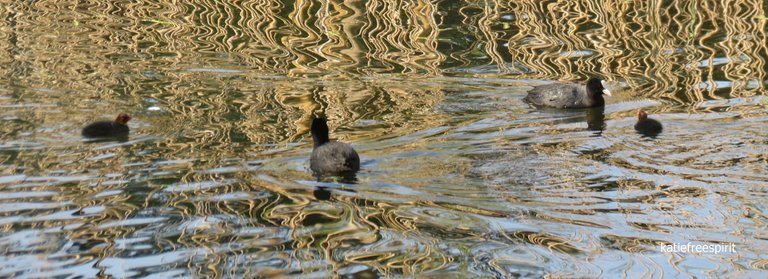
Later, I witnessed the coot hunting for food and giving it to its young (directly in the beak). The coot looked for food in the water, then dived, dipping its head in the water and fished it out, then gave food to its cootlings. Some of them closely watched their mother as she was doing it and thus learned a valuable life lesson on how to get food.
Później byłam świadkiem jak łyska polowała na pokarm i dawała go swoim młodym (bezpośrednio do dzioba). Łyska wypatrywała pokarmu w wodzie, następnie nurkowała, zanurzając głowę w wodzie i wyławiała go, po czym dawała jedzenie swoim pisklętom. Niektóre z nich bacznie przypatrywały się swojej rodzicielce jak to robi i tym samym pobierały cenną życiową lekcję jak zdobyć pokarm.
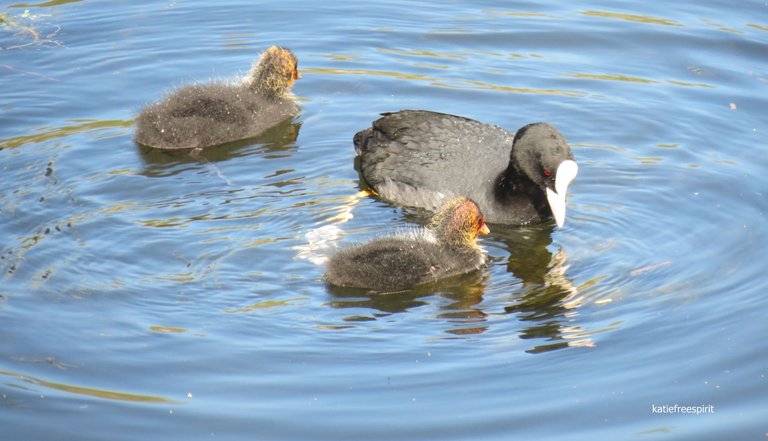
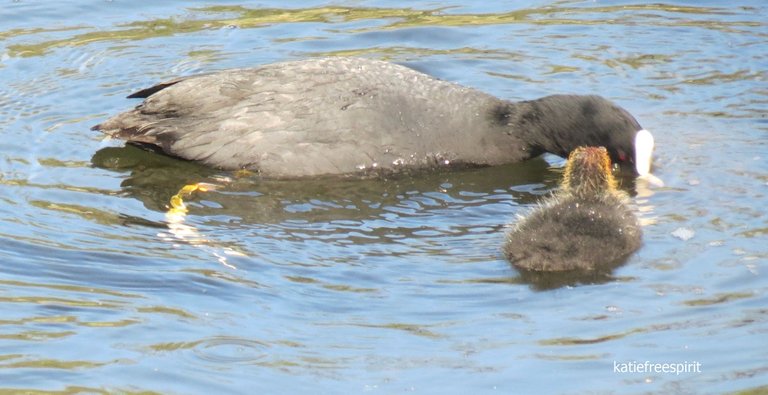
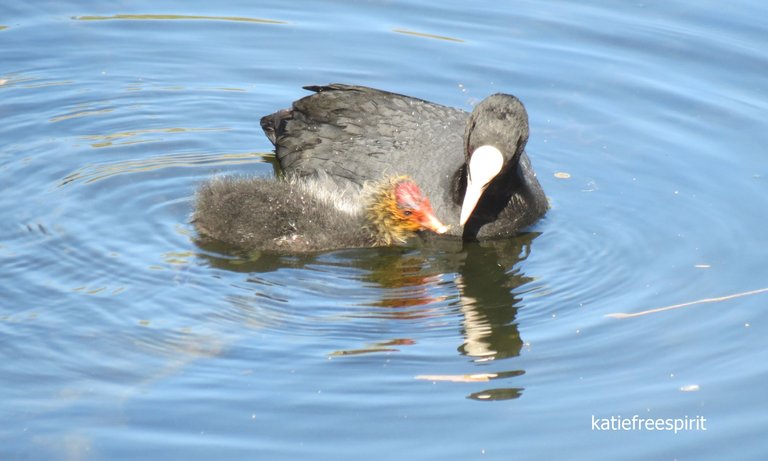
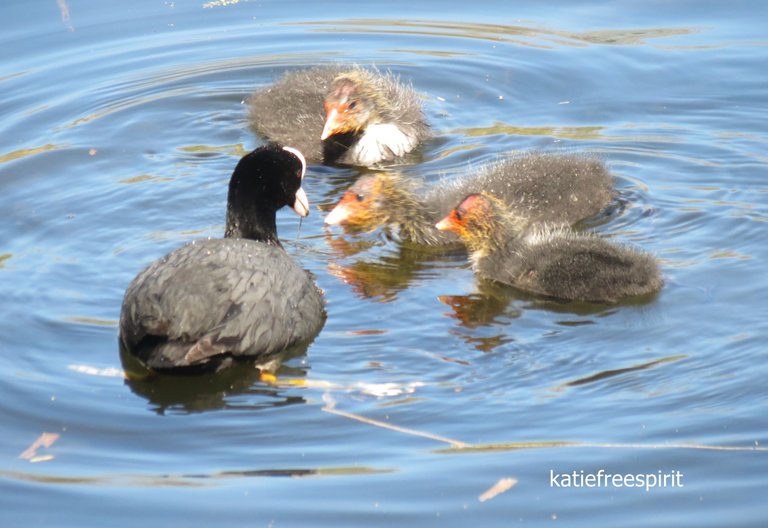
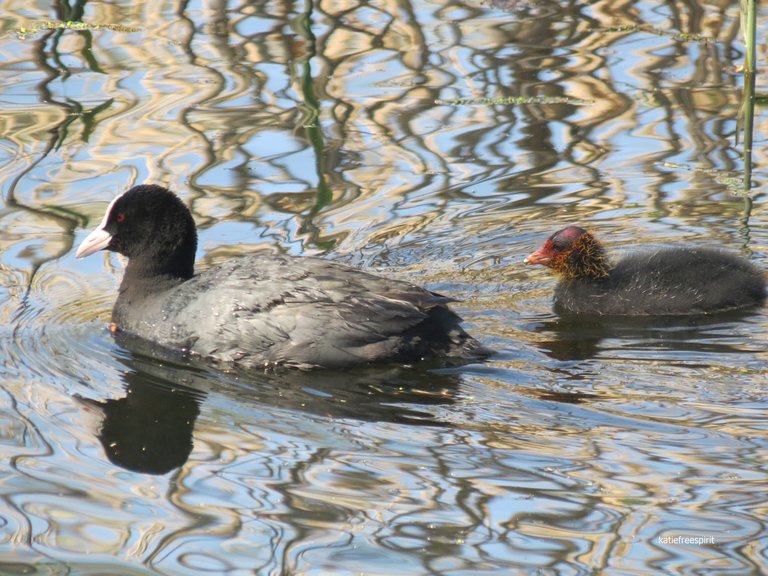
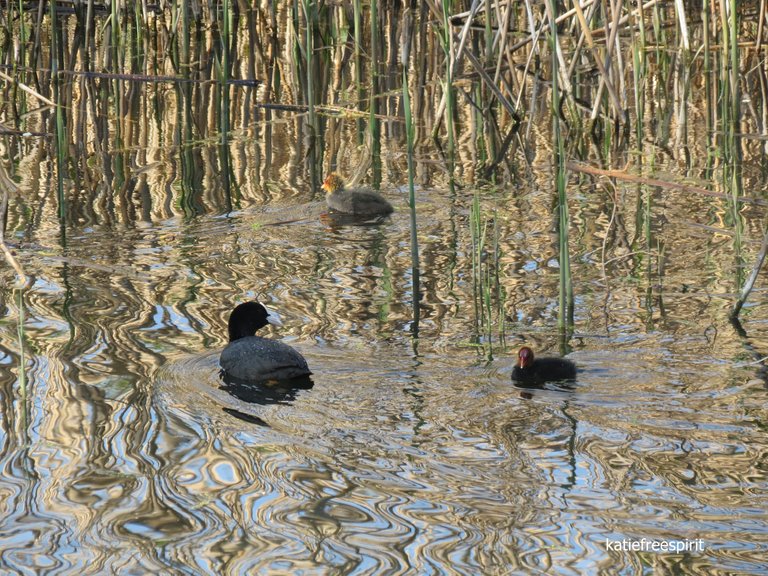
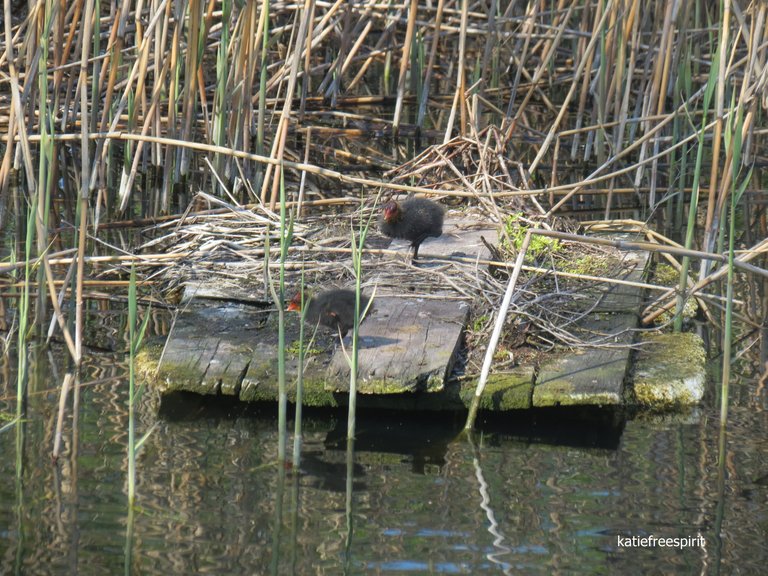
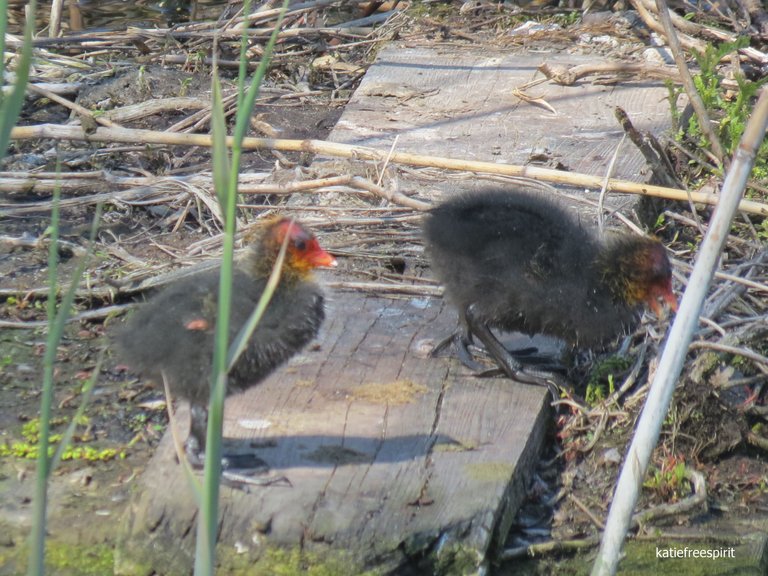

!discovery 10
Thanks :)
This post was shared and voted inside the discord by the curators team of discovery-it
Join our community! hive-193212
Discovery-it is also a Witness, vote for us here
Delegate to us for passive income. Check our 80% fee-back Program
Thanks :)
nice photos and information!
We appreciate your work and your post was manually curated by @none! from the DNA team!
Reach us on Discord to learn more about the project!
We appreciate your work and your post has been manually curated by zoology team (oscurity,nelinoeva) on behalf of Amazing Nature Community. Keep up the good work!
Beautiful photos, good information! you have placed the bibliographic references which makes us love it more! keep up the good content!
They are sooo cute ^^